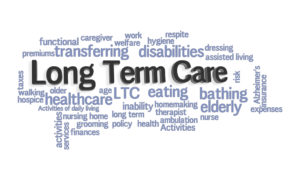What Does It Mean to Pay for Long Term Care with a Combination of Assets?
Most people haven’t set aside significant savings for the sole purpose of paying for their long term care but long term care expenses can have catastrophic effects on your savings, especially if you’re a partner with a spouse who might need to rely on these savings for the remainder of his or her retirement. 
Many people need to invest in the process of doing strategic long term care planning to discuss the benefits of various types of ways to pay for long term care services. It’s estimated that more than two thirds of people above age 70 will require some form of long term care services that will range from between one and three years.
This could decimate an individual or a couple’s retirement planning savings and therefore, should be factored into conversations about Medicaid qualification and other assets. In many cases, people use a combination of different types of assets to qualify for long term care expenses. Personal savings gives the most flexibility when it comes to selecting options for long term care. Personal savings can be used for nursing homes, in home care, assisted living or adult daycare.
But this is a long term option for very few people due to the high cost. Veterans’ disability benefits can be used for any long term care services but non-disability benefits extended to veterans cover in home services and adult daycare while not rent at an assisted living facility and are therefore, more limited. Sometimes a loved one might turn to a reverse mortgage for long term health care needs and the money is then repaid when the home is passed onto an heir or sold.
Medicare will pay for very little of long term care and under limited condition, including skilled nursing care in a facility. Medicaid is a last resort but one that many people end up needing. In fact, in 2018 Medicaid accounted for 62% of nursing home residents. Schedule a consultation with an estate planning attorney today to learn more about how this could affect you.








